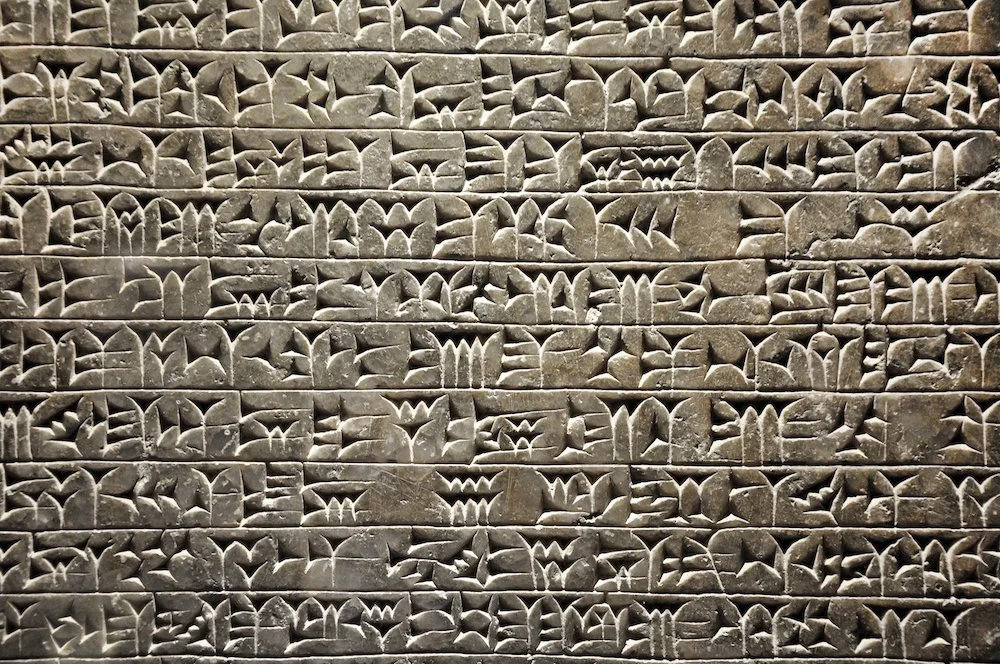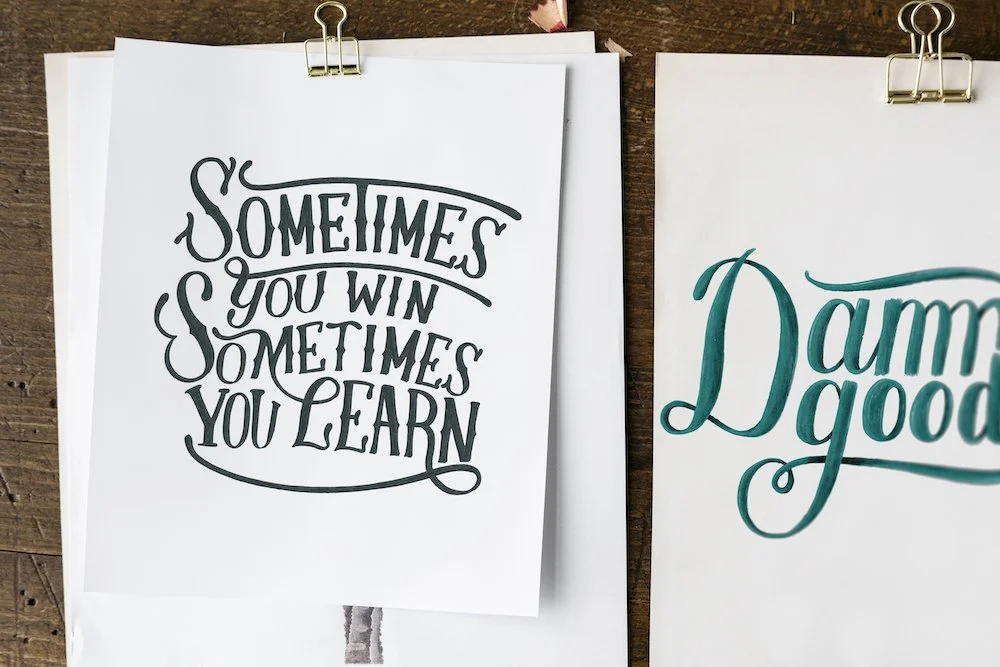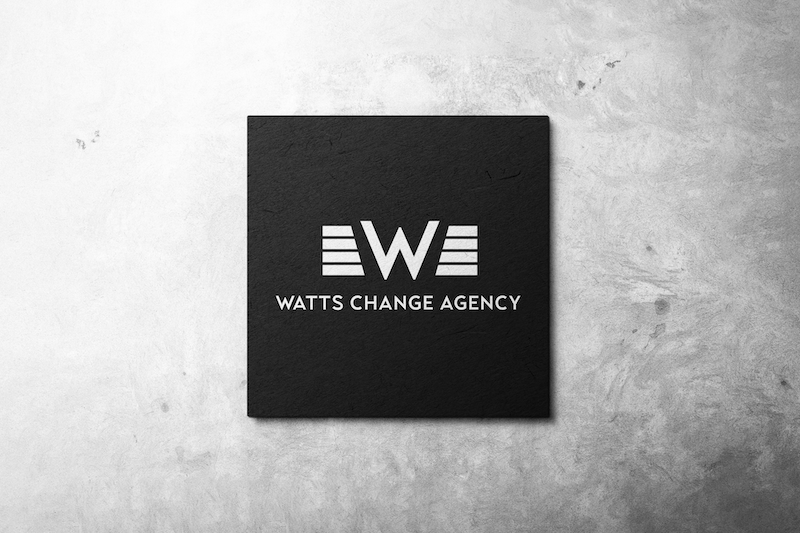Typography 101: What the Font?!?
Typography is the art and technique of arranging type to make written language legible, readable and appealing when displayed. In design, typography is critical as it can make or break the success of a design project. It involves choosing typefaces, point sizes, line lengths, line-spacing, and letter-spacing, and adjusting the space between pairs of letters.
Typography is the art and technique of arranging type to make written language legible, readable and appealing when displayed. In design, typography is critical as it can make or break the success of a design project.
A Brief History on TYpography
The history of typography is a long and rich one, dating back thousands of years to the earliest forms of written communication.
3200 BCE: CUNEIFORM SCRIPT
One of the earliest forms of typography was cuneiform script, which was developed in ancient Mesopotamia around 3200 BCE. This script was made by pressing a reed stylus into soft clay tablets to create wedge-shaped characters.
105 CE: CHINA
In China, the first printed text was produced using carved wooden blocks around the 7th century CE. The development of paper in China around 105 CE allowed for the creation of longer, more complex texts.
1500: PRINTING PRESS
In the West, the development of movable type printing is often credited to Johannes Gutenberg, who in the 15th century invented a printing press that used individual letters carved out of metal to print text. This innovation made it possible to produce books and other printed materials much more efficiently than by hand-copying.
1800s-1900s: RENAISSANCE
During the Renaissance, typography became an art form in its own right, with the development of elegant typefaces such as Garamond and Baskerville. The 18th and 19th centuries saw the development of many new typefaces, as well as improvements in printing technology.
2000-NOW: DIGITAL
In the 20th century, the introduction of computers and digital typesetting revolutionized the field of typography, allowing for greater precision and flexibility in the creation of printed materials. Today, typography continues to evolve, with new typefaces and design styles constantly being developed and refined.
Here’s why typography is essential to design:
When it comes to typography, the term "font" is often used interchangeably with the word "typeface," but they technically refer to different things. A typeface is a collection of letters, numbers, and symbols that share a consistent design style, while a font is a specific variation of a typeface, such as bold, italic, or condensed.
Typography may seem like you're just picking a font your like. But it’s actually a little more complicated that that. Selecting the right typography ensures that your message is better received by your target audience.
Here are some reasons typography is an essential part of the overall design:
Communication: Typography plays a crucial role in conveying a message. The right choice of font, size, and style can communicate the tone, mood, and emotion of a design, making it more effective in its communication.
Legibility: The readability of a design depends largely on its font. If the font used is hard to read, people are less likely to engage with the content. Choosing the right font is vital to ensure the message is conveyed accurately.
Aesthetics: The font used can significantly increase the aesthetic appeal of a design. Your font adds character, depth, and visual interest to a design. It also can show your brand’s values and voice. Playful fonts show that your brand is fun, while sleek fonts show your brand is more professional.
Branding: Typography is a significant aspect of branding. Consistently using the same font helps build brand recognition and trust in your target audience.
Accessibility: Typography plays a vital role in making designs accessible to people with visual impairments. By using appropriate font sizes, styles, and contrast, designers can ensure that their designs are accessible to everyone. Select fonts that are easy to read and be sure to also pick color schemes that are accessible to all.
Choosing the Right Font
There are many different types of typefaces, ranging from serif to sans-serif, script, display, and more. Serif fonts have small lines or flourishes at the end of each stroke, while sans-serif fonts do not. Script fonts mimic handwriting, and display fonts are meant to be used sparingly for headlines and titles.
When choosing a font for a design project, it's important to consider its legibility, readability, appropriateness for the tone and purpose of the text, and the overall visual impact it will have on the design. It's also important to pay attention to factors such as kerning (the spacing between individual letters) and line spacing, which can improve the readability and overall aesthetic of the text.
Typography is just as important to branding as graphic elements and color.
Choosing the Right Font
There are a ton of fonts out there to use. It’s almost overwhelming sometimes. I’ve designed a lot of brands and websites. I’ve also done design work for many brands using brand fonts selected by other designers. This experience has shown me
Here are some fonts that I love to use in branding and on website designs:
Abril Fatface: A serif font that is known for its bold, high-contrast strokes, Abril Fatface is a great choice for creating a strong, impactful brand identity. It's a classic font that can add sophistication and elegance to your branding.
Avenir Bold: Avenir is a clean and modern sans-serif font that looks great in logo designs. Its bold version has a strong presence that can make a statement.
Bebas Neue: This is a bold, condensed sans-serif font that is often used in logo designs. Its strong, geometric shapes give it a modern, edgy look.
Futura: Another classic sans-serif font, Futura Bold has a geometric, modern look that works well in logo designs. Its bold version can be especially impactful.
Garamond: If you're looking for a serif font with some history, Garamond Bold is a great option. It has a classic, elegant look that can add sophistication to your design.
Georgia: Another popular serif font, Georgia is a web-safe font that is commonly used for headings and subheadings. It has a classic look that works well for many types of content.
Helvetica: This sans-serif font is a classic, versatile font that has been used in countless logos over the years. Its bold version can be especially impactful in logo designs.
Lato: Another popular sans-serif font, Lato has a modern feel that is well-suited for digital designs. It's a clean, easy-to-read font that is available in a variety of weights.
Montserrat: I love this font so much that I made it a part of my brand’s identity. This is a modern sans-serif font that features a geometric design with clean lines and balanced proportions. It works well in branding designs that want to convey a sleek, contemporary aesthetic.
Open Sans: This is a sans-serif font that is widely used for digital content. It's a versatile font that is easy to read and looks great on screens.
Poppins: This sans-serif font has a clean and modern look that works well in a variety of branding applications. It features rounded edges and a geometric shape, giving it a friendly and approachable feel.
Playfair Display: A serif font with a classic look, Playfair Display has been popular in recent years. It features elegant, high-contrast strokes and works well in sophisticated, upscale branding designs.
Roboto: This sans-serif font was designed specifically for digital content. It's a modern font with a clean, simple look that is easy to read on screens.
Finding new fonts is not easy. Google, Microsoft, and Adobe own a lot of fonts, and also let everyone use a lot of common fonts for free.
If you are looking for unique fonts for your logo typeface or your next creative design project, you should check out some online typography resources. You can find free fonts and paid fonts at these resources.
Here are some resources for finding new fonts:
Typography is a crucial aspect of design that can impact the effectiveness, appeal, and accessibility of a design project. It is essential for designers to understand the importance of typography and choose the right fonts, sizes, and styles to achieve their desired goals.
Interested in working with us for your next graphic design or branding project? We’d love to chat through your needs to see if we might be a fit for you. Contact us by clicking the button below.







